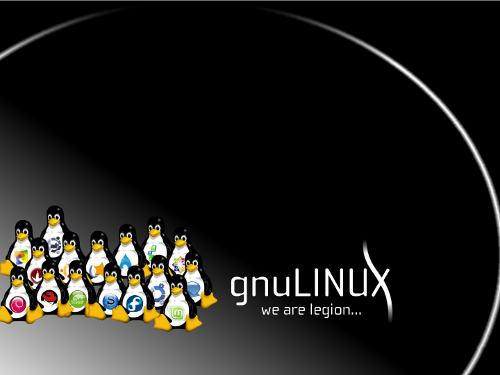
Contrary to what occurs with the Windows and like Apple, there are numerous versions of free operating systems. Why is that? And what are the peculiarities of these “distributions”?
By Andrew Solnik *
–
Previous Text column:
To protect the
surveillance Why use open formats
You can also migrate
Charter open to Bill Gates
–
If you’ve read the other texts of the series, is likely to have already downloaded and tried some free software platform, has drawn the importance of open formats and have understood that safety and privacy do not mix with proprietary software. How about now experience a free operating system on your machine
When you buy a computer, it is potato (unless it is Apple …): that comes with Windows or OS X, both owners. Only a tiny percentage ever leaves the factory with the GNU / Linux – this yes, free – installed. If this is not the case, the easiest way to test it is to download one of their distributions. Confused? . So you sit there comes history
The open source community is made up of different communities, which are articulated around & lt; i & gt; projects & lt; / i & gt; and develop tools fairly independently. The combination of several of these tools form an operating system with everything you need. It turns out that one need not necessarily use the same tools: to build a system, you can add one and leave another out, replace the X tool by Y or create a modified version of Z, for example
Windows is always Windows, OS X is always OS X. They are also puzzles, but those who have come mounted and framed factory. The GNU / Linux, by contrast, assumes shapes thousand. Perhaps you’ve heard of Ubuntu, right? A lot of people think Ubuntu and GNU / Linux are the same, but in fact it is just one of hundreds of distributions out there ready to be downloaded.
Because of the puzzle pieces are free , or can be analyzed, copied, modified and improved in various distributions arise from other, creating true families. Take a look at this “family tree” of GNU / Linux distributions for you to better understand how it works. Found Ubuntu? He is a Debian creates one of the oldest and most prolific distributions still active.
With so many options, which distribution to choose? Impossible to answer as well, pile-ready. So you start to sketch an answer one must take into account the characteristics of each them. The path I trod far might provide some clues.
My first experience was with Ubuntu. Popularity, detailed documentation and good supply of software were the factors that led me to make this decision there in 2007. Gone When I became interested in philosophy that underlay the free software movement, I discovered Trisquel, one of the totally free distributions recommended by Free Software Foundation
As soon as I started recommending it, I ran into a technical difficulty., for example, a wireless network adapter needed a driver or firmware owner to work – what unfortunately it is still quite common – their installation would not be so simple. It made me finally migrate to Debian, a distribution maintained by a large and active community of volunteers, ethically committed to the free, stable and secure software. It is currently the distribution I use and I indicate, but be sure to include others in your research before making a decision.
Fedora, focused on innovation and safety, is held under the auspices of the multinational Red Hat which uses the results to produce the Red Hat Enterprise Linux distribution paid offered as a solution for large enterprises. Arch Linux is a minimalist, highly configurable distribution. No wonder it is the darling of more advanced users. For those who want an experience “out of the box” with virtually all drivers, codecs and major programs already installed, a very popular option is Linux Mint.
Some distributions are geared to needs / specific audiences or are platforms to test new ideas. This is the case of elementary OS, which lets any user OS X feeling at home. If you thought that your old computer, dusty no longer had any way, learn about the Lubuntu and antiX.
For those who have a particular concern with privacy and security, Tails is designed to simplify access Internet anonymously, while the Qubes minimizes chances of remote attacks on your machine. The Ubuntu Studio and AV Linux are optimized for use in multimedia applications such as audio editors, video and photography. Games, Steam OS, still in beta, promises. If you are still in order to meet others, lose yourself sailing through DistroWatch.
No need to install all of them to decide your favorite. Much of the distributions can be run from removable media without the HD of your computer is changed. The step by step to do this is not exactly the same for all machines, so it is difficult to indicate a link that goes guide you on the way to the pot of gold. Forums, tutorials and manuals of their own distributions tend to be great starting points for those who want to venture into this. Good luck!
* André Solnik is student and movement activist for free software

No comments:
Post a Comment